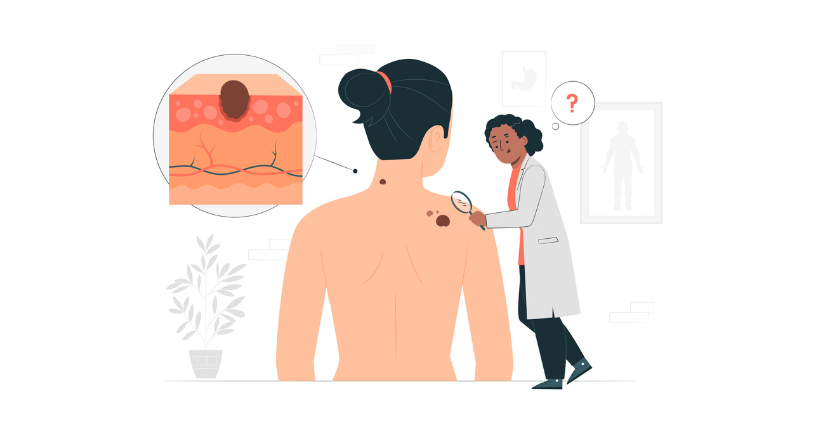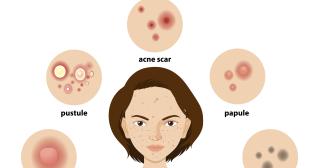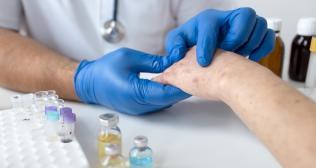
Leukoderma - Its Causes and Symptoms
Do you know anyone with white patches or spots on their skin? You might wonder what it is. It’s a disease known as leukoderma. It may start off as a small skin lesion. These grow and combine with other patches throughout time. The hands, forearms, feet, and face are typically where the first patches appear. However, these can occur anywhere else on the body. While the smaller patches move and alter throughout time, the bigger patches often remain in place. The disorder often manifests between the age of 10–30 and is especially visible in those with darker complexion. People of various ages, ethnicities, and genders can have leukoderma. Because of cosmetic considerations, there could seem to be a female predominance. Although incidence statistics are difficult to ascertain, leukoderma is more noticeable in people with coloured skin than in those with ethnic white complexion. In this blog, you will learn more about leukoderma, including its causes and symptoms.
Leukoderma
Leukoderma is a clinical sign describing a localised area of white depigmented skin due to complete loss of epidermal melanin. It is a skin condition that causes your skin to lose its colour and appear lighter than your natural tone. The particular area of your skin that loses its natural tone is called macule. When there are hairs in that particular area, then the hairs turn silver along with the skin. It is usually caused when the immune system destroys melanocytes, the cells that produce melanin, a chemical that gives pigmentation to your skin. It affects all races and sexes equally. Sometimes, it is most seen in people with darker skin tones.
It typically begins on your hands, forearms, feet, and face. It also appears on mucous membranes in your eyes and inner ears. Larger patches sometimes spread. However, they stay in the same spot for years.
Types of leukoderma
There are mainly two kinds of leukoderma:
Non-segmental leukoderma: It is the most caused condition. It usually starts by causing patches on both sides of your body symmetrically.
Generalised leukoderma: It is the most common type and causes macules in various parts of your body.
Mucosal leukoderma: It is a type that affects mucous membranes in your mouth and genitals.
Focal leukoderma: It is a rare type where the macules develop in small regions on your skin, and they do not spread.
Trichome leukoderma: This type causes a bullseye with a colourless spot.
Acrofacial leukoderma: It is caused by the loss of pigment around your fingers, lips, near mouth, and nostrils.
Segmental leukoderma: It is a type that only affects one side of your body.
Causes of leukoderma
Leukoderma is caused due to various reasons. Let’s see some of them,
- A lack of melanin pigment in your skin
- An autoimmune condition where your immune system attacks melanocytes
- Genetic mutations
- Frequent emotional stress
- Environmental triggers like exposure to harmful chemicals affecting your melanocytes
Symptoms of leukoderma
The symptoms may involve,
- Patches on skin or mucous membranes
- Patches on hair changing to silver colour
- White patches on the face, hands, legs, feet, and around the eyes and mouth
- The affected area of the skin becomes more pronounced with sun exposure
- Itching
- Inflammation around the affected area on the skin
Early signs of leukoderma
You may see some early signs and symptoms before leukoderma is completely caused. They are,
- White patches
- Patches on areas exposed to sunlight
- Itching
- Inflammation
- Changes in the texture of the skin
Complications of leukoderma
- Leukoderma, when left untreated, may lead to many complications such as,
- Eye abnormalities especially affect the retina and iris.
- Other autoimmune conditions, like hypothyroidism, diabetes, etc re also responsible.
- Some people may feel embarrassed about the way they appear. It causes anxiety, depression and other emotional challenges.
- Sensitive skin can cause your skin to burn quickly instead of just tanning.
Conclusion
To conclude, leukoderma is a benign cosmetic disorder that can be healed with appropriate treatment regimens and adherence to preventive measures. There are multiple causes that are attributed to leukoderma and can exhibit strong clinical features such as white patches.


















